When considering the family Oviraptoridae, the first species that comes to mind is probably Oviraptor itself. But despite its fame, Oviraptor remains a very poorly known animal. Much of our understanding of these unique dinosaurs comes from a close relative, Citipati. Indeed, by all rights, Citipati really ought to be the most famous oviraptorid. Not only has it provided the basis for most restorations of Oviraptor, but it has also served to shatter the old notion that these animals were egg thieves. Yes, as I mentioned way back in a previous review, several complete specimens of Citipati discovered back in the 1990s’ were found to be brooding their clutches in the exact same manner as modern birds.
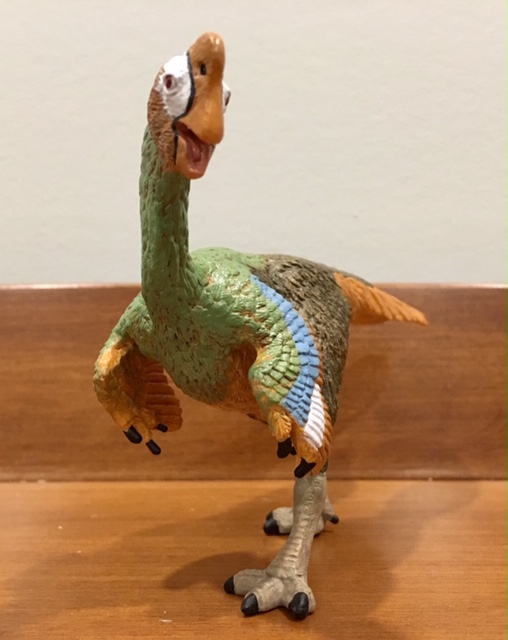
Safari Ltd. has had a pretty impressive track record with oviraptorids. In addition to their very fine 2018 Anzu, they’ve produced both male and female Oviraptors for the Carnegie Collection line and a “Baby Louie” and a brooding Oviraptor/Citipati for the Dino Discoveries line. And here we have the Wild Safari Citipati, new for 2019.
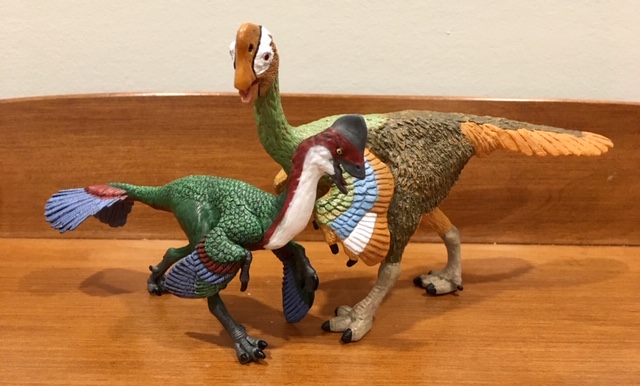
One of the first things you notice about this toy is its size. Measuring some 10 cm tall and just over 17 cm long, it’s as big as certain of the Safari carnosaurs such as the Monolophosaurus and the Ceratosaurus. While this definitely allows for greater sculpting detail (more on that later), the Citipati looks rather out of place alongside the Anzu. Both were about the same size in real life; 3 to 3.5 metres in length. The only known oviraptorid that exceeded them was the humongous Gigantoraptor.

The Citipati is posed in a casual walking stance with its left leg forward and its head looking quizzically to the left. Yes, unlike all the previous Safari oviraptorid figures, this one stands proudly on just its two legs, with no support from the wings or the tail. The main colour on this toy is pumpkin orange with dark brown on the tail and the haunches and dull green on the upper body and the neck. The wings have white and sky blue covert featheres and the head is very striking with its black stripes, white patches, and blood red eyes. The mouth is pink and there are two tiny white teeth visible in the upper jaw. Finally, the feet are beige and the claws are black. The overall result is a very parrot-like creature, an insanely far cry from early depictions.
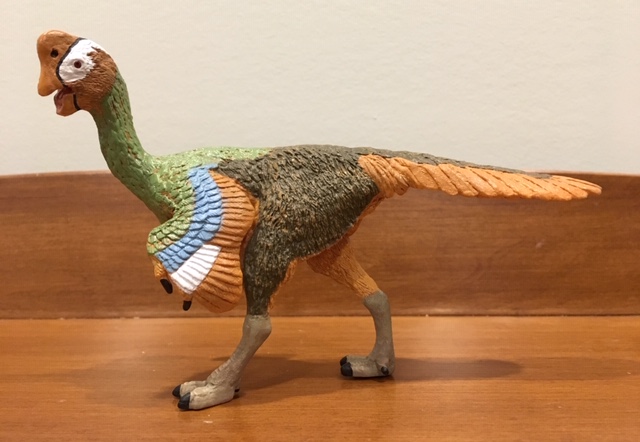
Like all the 2019 prehistoric figures, this Citipati was sculpted by Doug Watson, meaning you know for an absolute fact that it boasts painstaking and terrific detail. The open mouth and round eyes give it an alert, lively appearance. The plumage varies appropriately, from the shaggy feathers covering the body to the much larger and stiffer-looking ones on the wings and the tail. Unlike the Anzu or the Carnegie Oviraptor male, which feature fan-shaped tails, the Citipati‘s tail is more like that of an Archaeopteryx, with feathers lining the entire rim. The feet have faint scales just like those you’d see on any modern bird’s. And the hands are covered in pennaceous feathers, which is something still lacking in many feathered dinosaur figures.
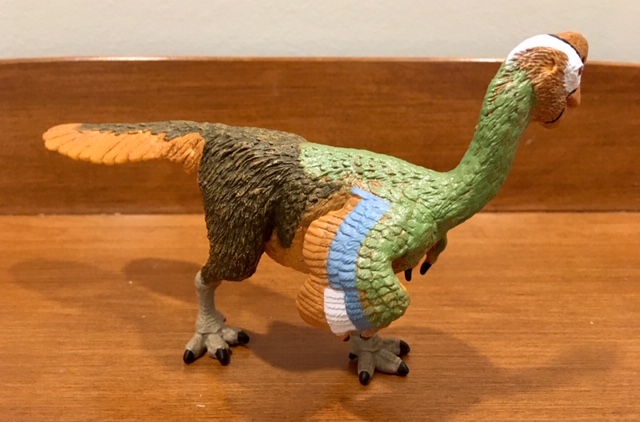
Which brings us finally to the accuracy of this figure. And again, as you would expect of any Watson sculpt, the Citipati rates very highly indeed. Granted, we may never know just how close the colour scheme and the feather arrangement comes to the real deal, but the overall proportions of the body appear to be correct and the head, with its relatively low crest, is recognizable as that of C. osmolskae.
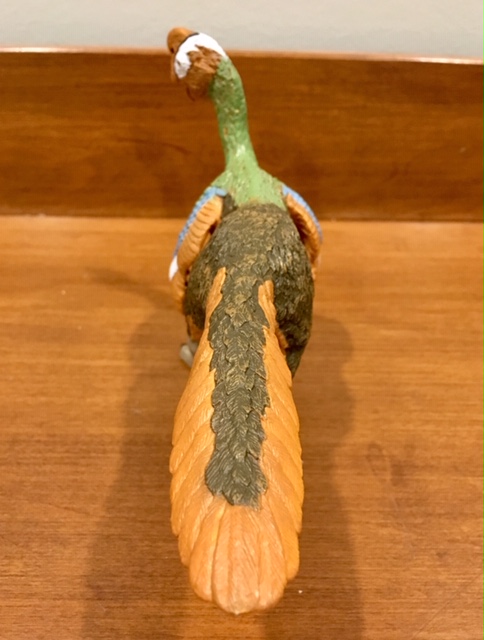
While its great size may be a turnoff to some collectors, I find the Wild Safari Citipati to be a very fine, very fun, and fairly unique toy. This one gets a strong recommendation from me!
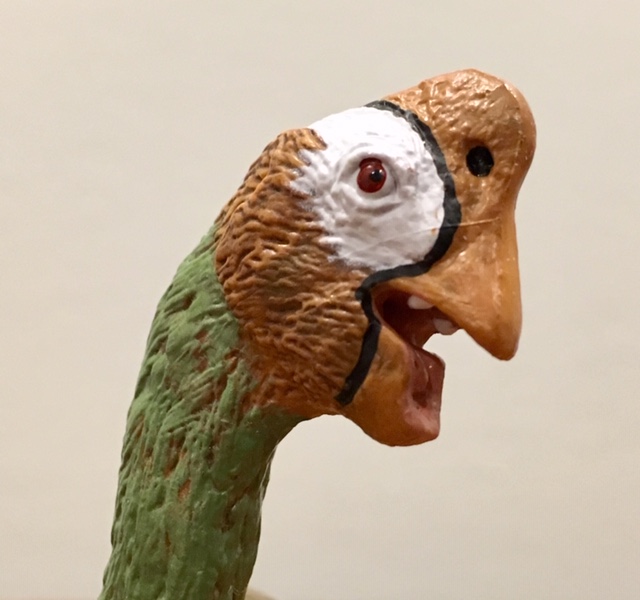
Disclaimer: links to Ebay and Amazon on the DinoToyBlog are affiliate links, so we make a small commission if you use them. Thanks for supporting us!




The only problem I have about this model is that mine won’t stand unsupported for more than a few minutes. So it has to live on its plastic stand that it came with.
Mine suffered from the same problems. I decided to rub its feet on hot water, but the effect can wear off after about a certain amount of time. It can still stand up, though, even once the effect has worn off. My CollectA Rajasaurus suffered the same problem, but can stand for longer.
Great review, this is one of my favourite figures of all time. And I didn’t know Cititpati was that big, I thought it was only half the size of Anzu, the large figure makes more sense now.
For me it is a figure in which you can appreciate the feathers more realistically than the anzu, that is to say with an impressionistic touches the figure of the citipati are appreciated totally detailed these feathers and the details if one (at least to me) he sees them at a normal distance. Then if one approaches and that is the good thing about the citipati the structure of the feathers and details seem blurred. That’s the great thing about Doug’s sculpture, which differentiates him from the anzu (an outstanding figure alike but hyperrealistic too finished).
On the other hand the citipati is as big as terópodos as the monolophosaurus and ceratosaurus but it is bigger because it is much more voluminous than the dinosaurs mentioned from my point of view. This figure is recommended for many reasons, especially because of the artistic “sfumato” of Doug’s sculpture and painting. Five stars for me is your rating.